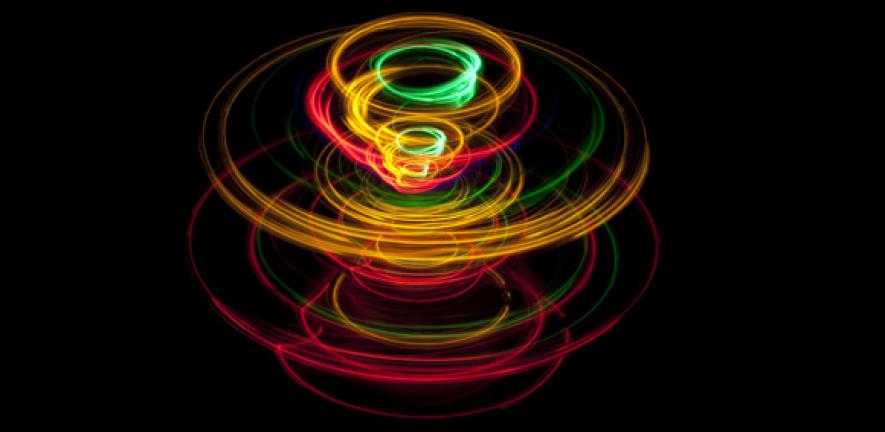The electricity you use to charge your phone is a flow of electrons that contain electric charge. Designing circuits that utilise this charge and how it behaves within materials like semiconductors is a field known as electronics. Electrons and other particles also have another property known as spin. The field of study associated with utilising not only electron charge but also its spin is known as spintronics (spin-electronics).
An emerging class of material known as organic semiconductors, which you will have seen in OLED (Organic Light Emitting Diode) screens that are now dominant in commercial displays, actually allow spins to travel across them for long distances making them very interesting for spintronics applications. To understand more about how spins behave in these materials we look at them under strong applied magnetic fields because the spin makes the particle behave like a tiny bar magnet. Most of them will point along the applied field.
We can force more of these little magnets to point against the applied field if we hit them with an electromagnetic wave (radio wave – microwave) at a certain (resonant) frequency. The amount by which these little magnets align together is called “polarization”; so we polarize them to point against the field. After applying the electromagnetic wave the little magnets will return to their initial polarization. In doing so they release a signal we can detect which is proportional to this polarization difference. Encoded in this signal is information on how these tiny magnets have interacted with each other, giving us more insight into what is going on in these materials. Using this technique to study electron spins is known as electron spin resonance (ESR) and using it to study atomic nuclei is known as nuclear magnetic resonance (NMR). NMR is less sensitive in these organic semiconductors but by making use of electron-nuclear interactions we can transfer polarization from the electrons to the atomic nuclei; this in known as dynamic nuclear polarization (DNP). Now the polarization difference for atomic nuclei is larger making the detectable signals stronger. This is great because by looking at atomic nuclei we can get a better look at the structures of these materials and how it affects the spins behaviour. This DNP technique could be used not just for enhancing NMR signals but also as an active process in spintronics and energy storage applications.
Tarig Babiker ElMubasher Mustafa
NanoDTC Student, c2019

